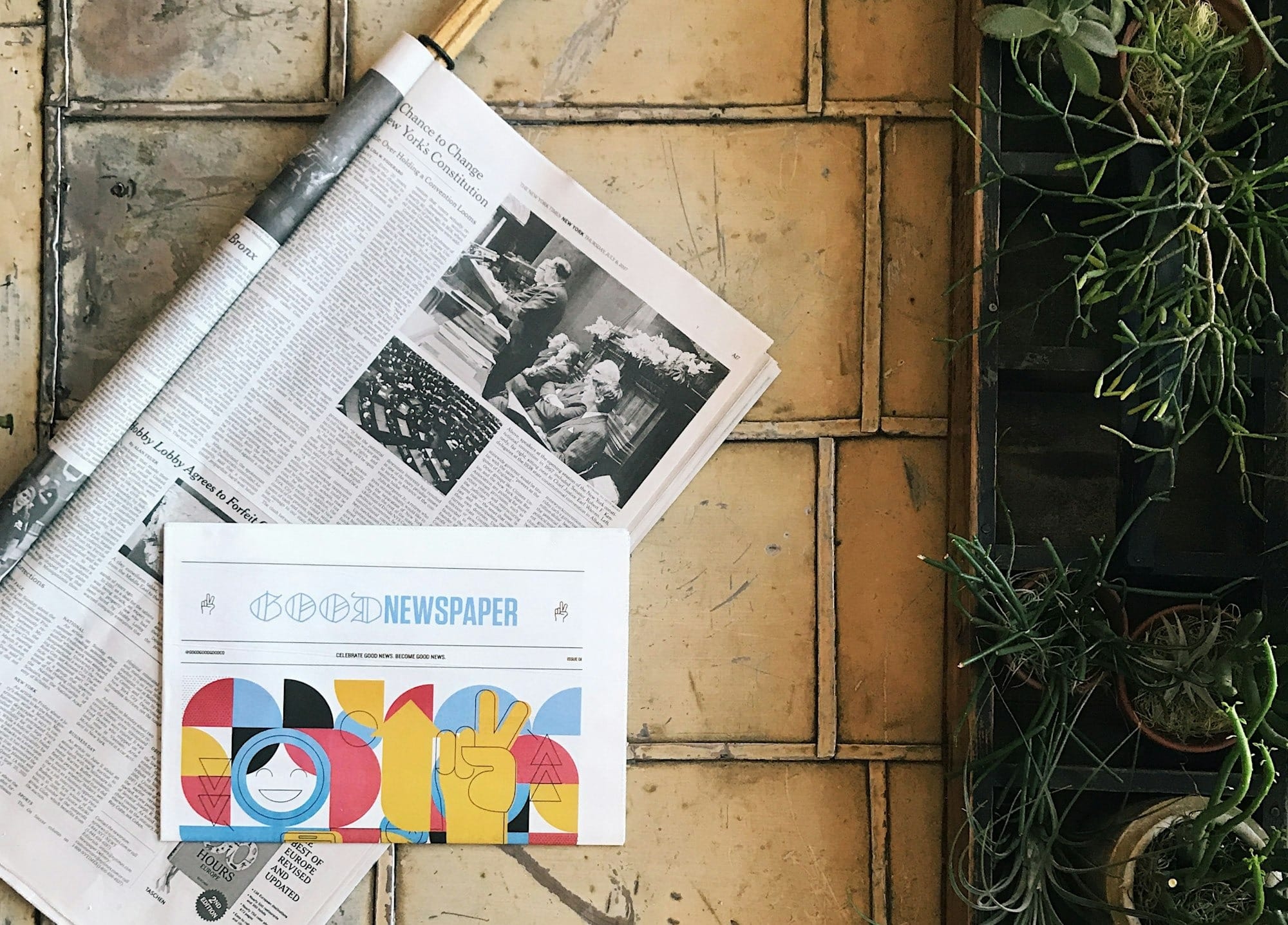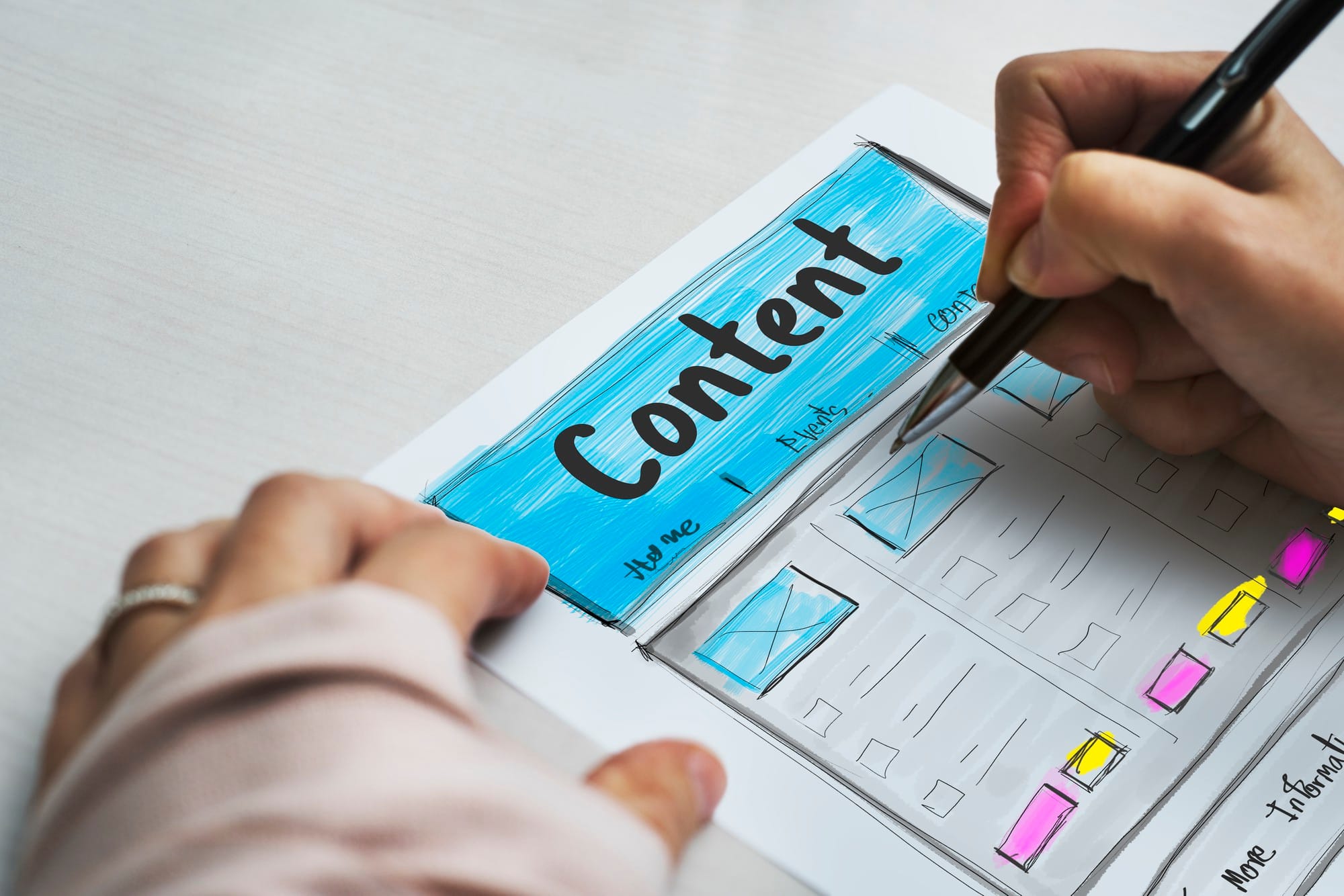Boost Newsletter Engagement with These Top Visually Appealing Design Hacks

Creating a visually appealing newsletter is no longer a "nice-to-have"—it's essential for engaging your audience and driving results. A well-designed newsletter isn’t just about making it look pretty; it’s about crafting a layout that tells your story, showcases your brand, and encourages readers to take action. Whether promoting a product, sharing updates, or nurturing a loyal audience, how your newsletter looks can make or break its success.
In this guide, we’ll explore 10 essential tips to create newsletters that are not only visually appealing but also strategically designed for engagement. Each tip will help you stand out in crowded inboxes and keep readers coming back for more. And don’t forget—LetterSub is here to amplify your newsletters, connecting you with a wider audience and helping you grow your community.
Let’s dive into the ultimate newsletter design guide!
1. Start with a Clean and Simple Layout

What It Is
A clean and simple layout is all about creating a well-structured, easy-to-read newsletter design. It prioritizes whitespace, clear fonts, and consistent formatting to ensure your content is visually appealing and scannable. Readers should be able to quickly identify key sections, like headlines, images, and CTAs, without feeling overwhelmed. Simple layouts are particularly effective on mobile devices, where cluttered designs can easily lead to frustration.
The idea isn’t to strip your newsletter of all design elements—it’s to organize them in a way that makes reading effortless. For example, dividing content into blocks with sufficient padding ensures each section stands out. Minimalism in design doesn’t mean boring; it’s about presenting information in a clean, aesthetically pleasing way. Some additional resources in Moosend said that a clean and simple layout can make your newsletter easily scannable.
Why It Works
A clutter-free layout works because most people skim through emails rather than reading every word. If your newsletter feels overwhelming, readers are likely to close it before engaging with the content. A simple layout ensures that the most important information is easily accessible, which increases the chances of your audience interacting with your CTAs or links.
Additionally, clean layouts load faster on all devices, especially mobile. Since mobile opens accounts for a large portion of email engagement, a simple design ensures a better user experience. Research also shows that clean designs reduce cognitive load, making it easier for readers to absorb the content and take action.
Example
Apple’s email newsletters are a great example of clean design. They use lots of whitespace, high-quality product images, and minimal text to draw the reader’s attention to the essentials. Another example could be a travel agency. Instead of cluttering the email with multiple deals, they highlight one destination with a bold image and a single CTA like “Explore Paris.”
2. Use High-Quality Visuals

What It Is
High-quality visuals refer to images, videos, or graphics that enhance the appeal of your newsletter and make your content more engaging. These visuals should align with your brand's identity and message while adding value to the content. For instance, a stunning product image can instantly catch the reader’s eye, while a short, engaging video can keep them hooked for longer.
Visuals should also be optimized for fast loading speeds to ensure they don’t slow down your newsletter’s performance. Whether it’s lifestyle imagery, infographics, or GIFs, the key is to choose visuals that support the purpose of your newsletter and resonate with your audience. Click here for some additional readings.
Why It Works
Humans process visuals 60,000 times faster than text, making high-quality visuals an essential element in capturing attention. Images and videos evoke emotions, making your content more memorable and compelling. A well-placed visual can also act as a focal point, guiding readers through your newsletter and toward your CTAs.
Visuals also boost engagement rates. Emails with visuals are more likely to be clicked on and shared than those without. Furthermore, good visuals create a professional impression, which can increase trust in your brand.
Example
A fashion brand promoting a new collection could feature high-resolution images of models wearing the latest styles, along with a CTA like “Shop the Look.” A SaaS company might include a GIF demonstrating their product in action or an infographic summarizing the benefits of their tool. Canva’s newsletters are another excellent example—they feature sleek, vibrant visuals that complement their branding and keep readers engaged.
3. Focus on Mobile-Friendly Design

What It Is
Mobile-friendly design ensures that your newsletter looks and functions perfectly on mobile devices, such as smartphones and tablets. This involves using responsive templates that automatically adjust layouts, fonts, and images to fit smaller screens. It also means keeping paragraphs concise, ensuring CTAs are easy to click, and optimizing images for faster loading on mobile networks.
Considering that nearly 50% (or more) of emails are opened on mobile devices, mobile optimization is no longer optional—it’s a necessity. Your newsletter should deliver the same seamless experience on mobile as it does on desktop, with no need for zooming or excessive scrolling. An additional guide emphasizes the necessity of responsive design, ensuring that newsletters adapt to various device sizes.
Why It Works
A mobile-friendly design works because most readers check their emails on the go. If your newsletter isn’t optimized for mobile, readers may struggle with illegible fonts, oversized images, or CTAs that are hard to click. This can lead to frustration and lower engagement rates.
Responsive design improves readability and accessibility, ensuring your newsletter looks professional and polished. It also helps reduce bounce rates, as readers are less likely to exit your email due to poor design. Moreover, mobile-friendly emails often perform better in terms of open rates, click-through rates, and conversions.
Example
An online fitness trainer might send a newsletter featuring workout tips. On mobile, the design ensures the headline is bold and easy to read, the workout images are appropriately sized, and the CTA button, “Start Your Free Trial,” is large enough to tap. Brands like Airbnb excel in mobile optimization, with newsletters that load quickly, look stunning, and make navigation effortless.
4. Add Consistent Branding

What It Is
Consistent branding involves incorporating your brand’s logo, colors, typography, and tone of voice into your newsletter design. This ensures that every email you send is instantly recognizable as coming from your business. Branding goes beyond visuals—it also includes maintaining a consistent style of writing, imagery, and overall messaging.
Your branding should align with your other communication channels, such as your website and social media, to create a cohesive experience for your audience. This builds familiarity and trust, making readers more likely to engage with your content.
Why It Works
Brand consistency reinforces your brand identity and makes your newsletters memorable. Readers who recognize your branding are more likely to open your emails and interact with your content. Consistent branding also conveys professionalism and builds trust over time, especially for businesses looking to establish long-term relationships with their audience.
Additionally, branding helps differentiate your newsletters from competitors, making your emails stand out in crowded inboxes. It also creates a sense of reliability, as readers come to expect a certain level of quality and style in your communications.
Example
A coffee shop might use earthy tones, elegant fonts, and high-quality images of coffee beans in their newsletters to reflect their artisanal branding. Netflix’s newsletters are another example—they always feature their bold red logo, sleek black-and-white visuals, and a conversational tone that aligns with their branding across platforms.
5. Write Clear and Concise Copy

What It Is
Clear and concise copy focuses on delivering your message in as few words as possible without sacrificing clarity or impact. This involves breaking up text into short paragraphs, using bullet points, and writing headlines that immediately convey the main idea. Your copy should be straightforward and engaging, avoiding jargon or overly complex language that might confuse readers.
Effective copywriting prioritizes readability, with sentences that are easy to scan and understand. Every word should serve a purpose, guiding readers through the newsletter and encouraging them to take action.
Why It Works
Concise copy works because most readers skim emails rather than reading them word for word. If your message is buried in long paragraphs or complicated sentences, readers are likely to lose interest. Clear copy respects your audience’s time, making it easier for them to absorb key information and engage with your content.
This type of writing also increases the effectiveness of CTAs, as readers are more likely to follow through when they understand the value you’re offering. Additionally, concise copy helps improve mobile readability, where space is limited, and long blocks of text can be daunting.
Example
A tech company promoting a software update could use concise copy like, “We’ve just made your favorite app even better! Explore faster loading times and new features today. Update now.” Similarly, an e-commerce brand might highlight a sale with copy like, “Flash Sale! 30% off all items for the next 24 hours. Shop Now.” Both examples are short, engaging, and direct.
6. Incorporate Engaging Call-to-Actions (CTAs)

What It Is
A Call-to-Action (CTA) is a clear, concise prompt that encourages your readers to take a specific action, like clicking a link, making a purchase, signing up for an event, or downloading a free resource. CTAs often appear as buttons or hyperlinked text that stands out from the rest of your content. A good CTA uses action-oriented language and emphasizes urgency or value. For example, phrases like “Get Started,” “Claim Your Free Trial,” or “Shop Now” are common but effective ways to direct your audience.
CTAs aren’t just limited to text or buttons; they can be embedded in images, forms, or even interactive features like polls. The key is making them easy to spot and compelling enough to trigger action.
Why It Works
CTAs work because they provide clarity and direction for your audience. Without them, readers might enjoy your newsletter but leave without taking any meaningful action. A strong CTA ties your content to a tangible goal, whether it’s driving traffic to your website, boosting sales, or increasing event signups.
Strategically designed CTAs also create a sense of urgency or exclusivity, such as “Limited Time Offer” or “Only 5 Spots Left.” These psychological triggers encourage immediate action, helping you achieve faster results. Furthermore, CTAs help you measure the success of your newsletter by tracking clicks and conversions, providing insights for future campaigns.
Example
Imagine you’re promoting a webinar in your newsletter. Your CTA could be a bold, colorful button that says, “Reserve Your Spot Now.” Place it prominently after a short description of the webinar, along with a supporting sentence like, “Seats are filling up fast—don’t miss out!”
Another example could be a retail brand offering a discount code. A CTA like, “Redeem Your 20% Discount,” paired with a countdown timer, adds urgency and encourages readers to act quickly. Brands like Nike often use visually striking CTAs that align with their branding while encouraging immediate action.
7. Personalize Your Content

What It Is
Personalization means tailoring your newsletter content to resonate with individual readers based on their preferences, past behaviors, or demographics. It goes beyond just including their first name in the subject line—it involves creating content that feels relevant and timely. This could include product recommendations, exclusive offers, or articles aligned with their interests.
For instance, if a reader has purchased fitness equipment from you before, your newsletter could feature related workout tips or accessories they might like. Personalization is powered by tools like email segmentation and automation, which allow you to target specific groups within your audience based on criteria like location, purchase history, or engagement level.
Why It Works
Personalization works because it makes your readers feel seen and valued. People are more likely to engage with content that feels directly relevant to them. By addressing their unique needs and preferences, you build stronger relationships and increase trust.
It also helps improve key metrics like open rates, click-through rates, and conversions. A personalized email is more likely to stand out in a crowded inbox, especially when it delivers value tailored to the recipient. Additionally, personalization can reduce unsubscribe rates, as readers are less likely to feel overwhelmed by irrelevant content.
Example
Spotify’s personalized playlists, like "Discover Weekly," serve as a great example of how personalization fosters loyalty and engagement. Similarly, Amazon recommends products based on browsing and purchase history, driving repeat sales.
For newsletters, imagine you’re running an online bookshop. Your email to a subscriber could say, “Hi Alex, we noticed you loved thrillers! Check out these top picks in mystery and suspense.” This approach feels more conversational and relevant than a generic email promoting all genres.
8. Include Interactive Elements

What It Is
Interactive elements in newsletters encourage readers to engage actively with your content rather than passively consume it. These elements can include clickable polls, quizzes, GIFs, embedded videos, accordions, or interactive product showcases. The goal is to create a two-way interaction where readers feel involved.
Interactive content is particularly useful for gathering feedback, boosting engagement, and keeping your audience entertained. It can also create a unique experience that sets your newsletter apart from competitors. An additional guide explores various email design strategies, including the use of interactive elements to boost engagement and provide a dynamic user experience.
Why It Works
Interactive elements capture attention and sustain engagement by breaking the monotony of static content. They invite readers to participate, making them more invested in your newsletter.
Interactive features also provide valuable data and insights. For instance, a poll asking, “Which product should we launch next?” not only engages readers but also helps you make informed decisions based on their preferences. Additionally, interactive content is more likely to be shared or remembered, increasing your brand visibility.
Example
A food blogger’s newsletter could include a quiz titled, “What’s Your Perfect Dessert?” Readers answer a few fun questions, and at the end, they’re directed to a specific recipe. Another example could be an e-commerce brand embedding a product carousel in their email, allowing users to browse items without leaving their inbox.
Tools like Mailchimp, Stripo, or BEE Free make it easy to incorporate interactive elements into your newsletters without coding knowledge.
9. Leverage Visual Hierarchy

What It Is
Visual hierarchy refers to arranging elements in your newsletter to guide readers’ attention to the most important parts first. This is achieved through variations in size, color, contrast, and placement. For example, headlines are typically larger and bolder than body text, while CTAs are highlighted with bright colors.
A clear visual hierarchy ensures that readers can quickly understand the structure of your newsletter and focus on the key messages. This is especially important in email design, where readers spend only a few seconds scanning content.
Why It Works
Our brains process visual cues faster than text, making visual hierarchy an essential part of newsletter design. It allows readers to grasp the main points at a glance and encourages them to scroll further for more details.
Without a clear hierarchy, newsletters can feel overwhelming or cluttered, causing readers to abandon them. A well-structured layout, on the other hand, improves readability and ensures your content gets the attention it deserves.
Example
Start your newsletter with a bold, attention-grabbing headline, followed by a high-quality image or subheading. Use contrasting colors for your CTA buttons to make them stand out. For instance, a tech brand might feature a large product image at the top, followed by smaller blocks of text and a prominent CTA like “Shop the Latest Gadgets.”
10. Test and Iterate Your Design

What It Is
Testing and iterating your newsletter design involve experimenting with various elements to see what resonates best with your audience. This includes A/B testing subject lines, layouts, CTAs, images, and even sending times. Iteration means using the insights from these tests to make continuous improvements.
Testing isn’t a one-time process; it’s an ongoing effort to refine your strategy and maximize results. Tools like Mailchimp, HubSpot, or LetterSub make it easy to run tests and analyze performance metrics.
Why It Works
Testing ensures you’re not relying on guesswork. Instead, you’re using real data to optimize your newsletter for engagement and conversions. It also helps you stay adaptable, as audience preferences can change over time.
By iterating, you can continually improve your open rates, click-through rates, and overall ROI. Testing also allows you to identify what doesn’t work, saving time and resources in the long run.
Example
An e-commerce brand might A/B test two subject lines: “Exclusive 20% Off Today Only” vs. “Your Exclusive Discount Awaits.” By analyzing which version gets more opens and clicks, they can refine their future campaigns.
Creating a visually appealing newsletter isn’t just about design—it’s about understanding your audience and delivering value in a way that captures their attention. From clean layouts to personalized content, each element plays a vital role in making your newsletter stand out in crowded inboxes. High-quality visuals, responsive design, and clear branding ensure your message is polished and professional, while concise copy and strategic CTAs drive engagement and conversions.
By incorporating these strategies, you can build newsletters that not only look great but also achieve your marketing goals. And with LetterSub, you have the tools to bring these ideas to life effortlessly. Whether you’re a small business owner, a hobbyist, or a marketer, LetterSub makes it easy to create stunning, high-performing newsletters that your audience will love.
